An overnight trip on the Sunrise Izumo, Japan’s awesome Tokyo-Shimane sleeper train【Photos】
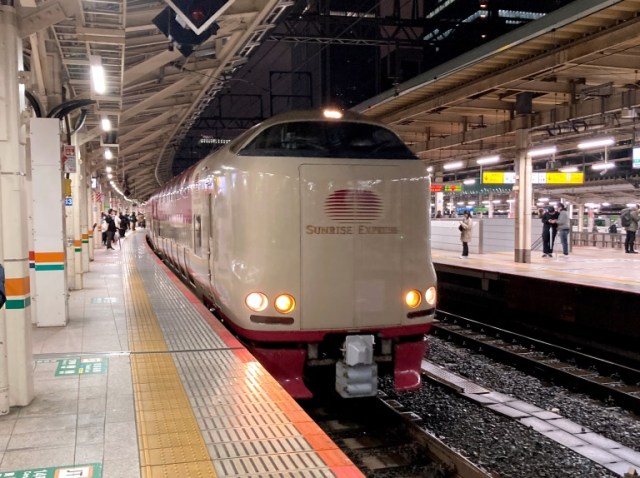
Mr. (and Mrs.) Sato ride the overnight rails back to his hometown on one of Japan’s coolest cross-country travel options.
Our ace reporter Mr. Sato might live and work in Tokyo, but he grew up in Shimane Prefecture. He’s still got family there too, so every year in February he takes a trip back to visit and reconnect with his roots in his hometown of Matsue.
But it’s a long way from Tokyo to Matsue.
Since there’s no Shinkansen bullet train line that goes to Shimane, usually Mr. Sato’s trips home involve a airplane ride. This year, though, he decided to make the trip by taking the Sunrise Izumo overnight train, which leaves from Tokyo Station and takes about 12 hours to reach Matsue.
It’s not easy to snag Sunrise Izumo tickets, though. Reservations can only be made one month in advance, and sometimes sell out in less than an hour after they go on sale at 10 o’clock in the morning. Using West Japan Railway’s Odekake.net website, though, and checking ticket availability as soon as reservations for his travel date opened, he managed to secure passage home.
▼ Note, though, that you still need to print out your tickets at a JR station kiosk prior to getting on the train.
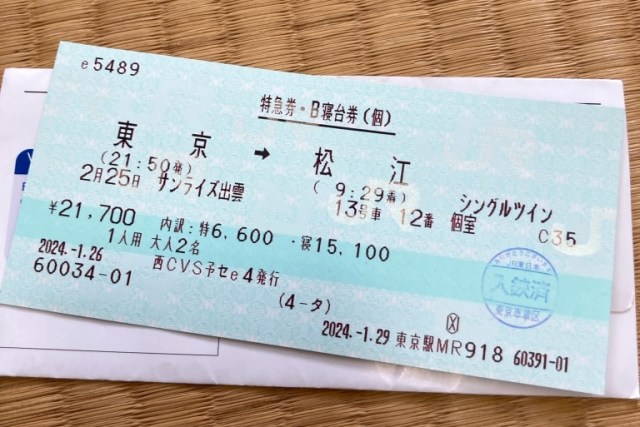
And so it was that on a late-February night, Mr. Sato was standing on Platform 9 at Tokyo Station, waiting for the arrival of his train.
▼ Some of the text is a little scrunched, but 寝台特急サンライズ出雲 translates to “Sleeper Train Limited Express Sunrise Izumo”
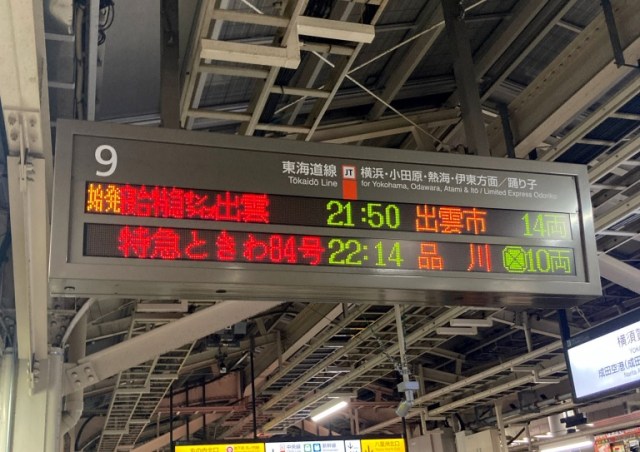
Sunrise Izumo leaves Tokyo Station at 9:50 p.m., and even before Mr. Sato could see the train, he coud hear it.
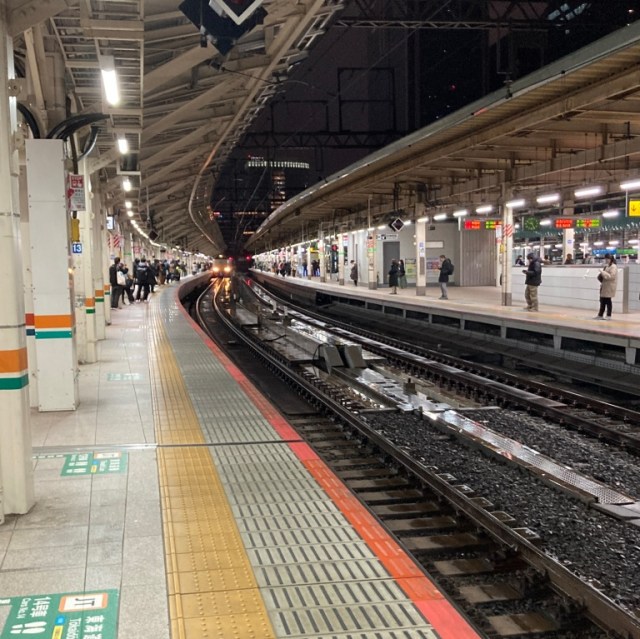
Announcing its presence with a quick blast of its whistle, the train drew up to the platform, with Mr. Sato and other travelers pulling out their phones to snap a commemorative pic.
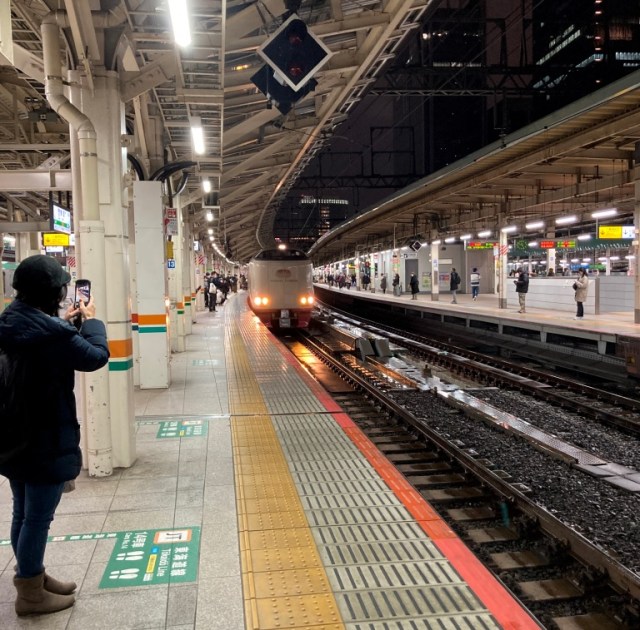

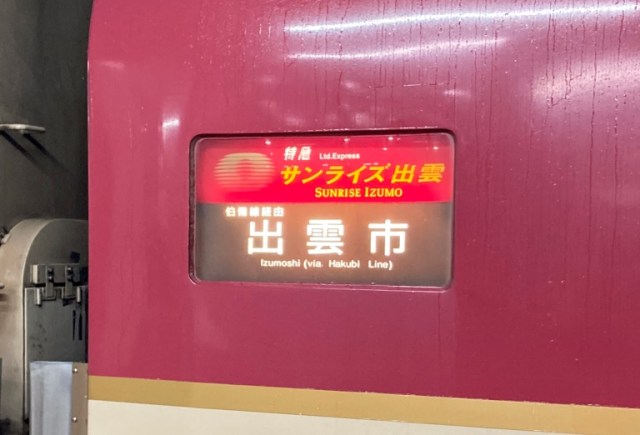
Right away, you can tell that the Sunrise Izumo is a special train, because of how may windows it has, with each “room” having its own.
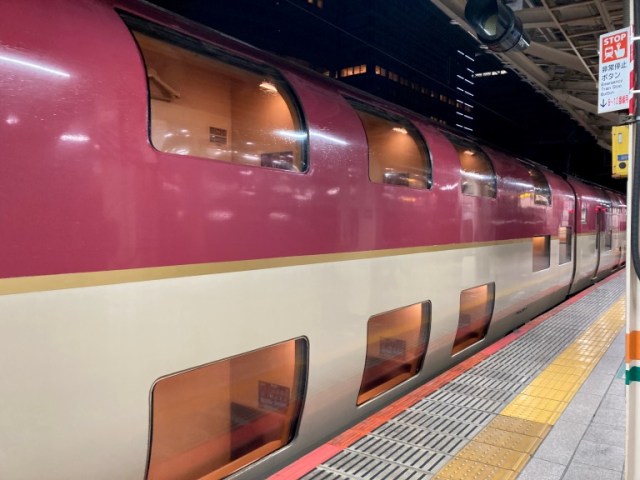
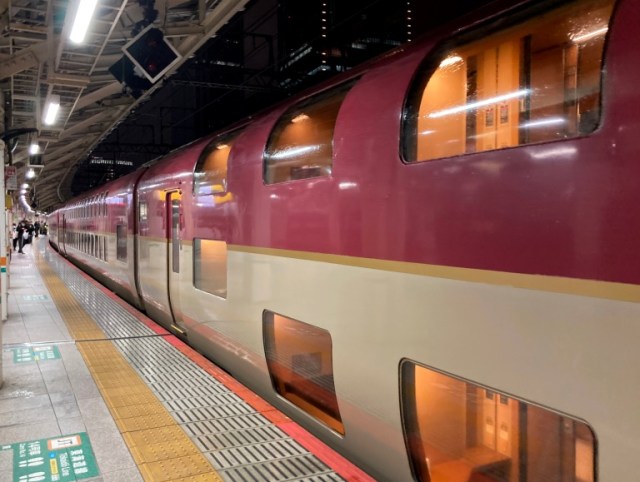
Stepping inside, you’ll notice that the central passageway is pretty narrow, in order to maximize the interior space in the private rooms on both sides of the walkway.
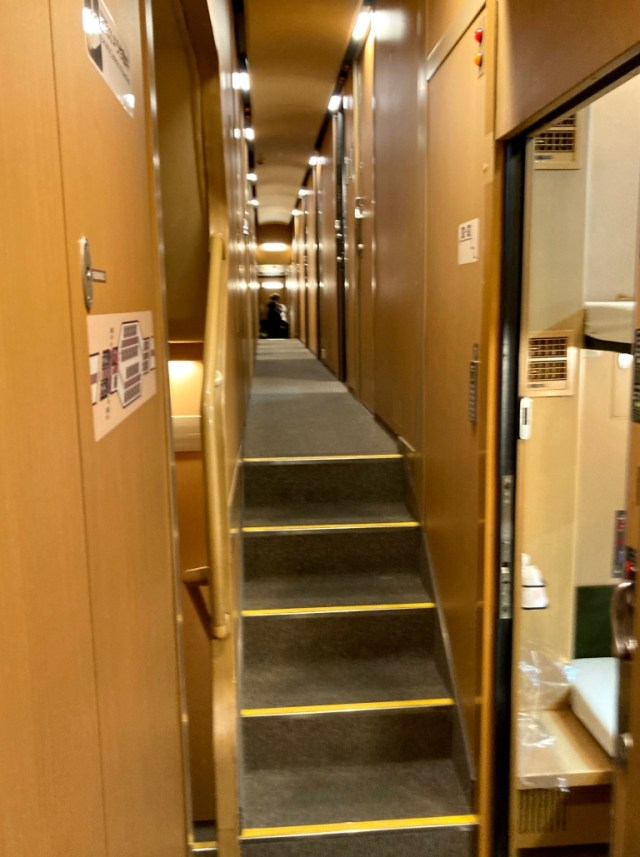
Opening the door to his room, Mr. Sato found a clean, tidy space with a 196-centimeter (77.2-inch) long bed with sheets and pillow, and even a set of pajamas to sleep in.
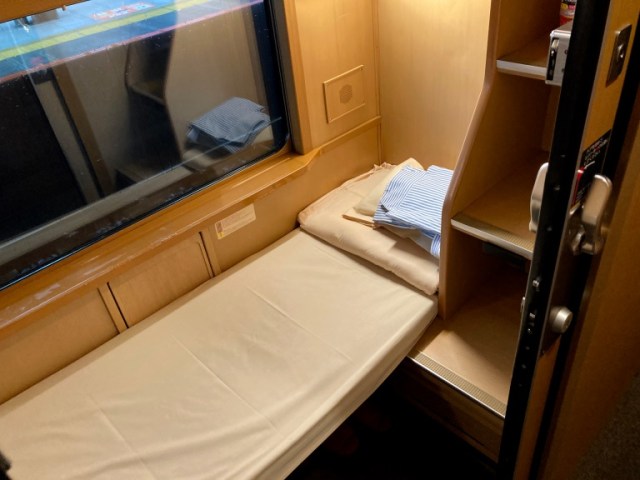
It’s not palatial, but there was plenty of room for Mr. Sato to stretch out in, and he knew he was in for a cozy and comfortable ride.
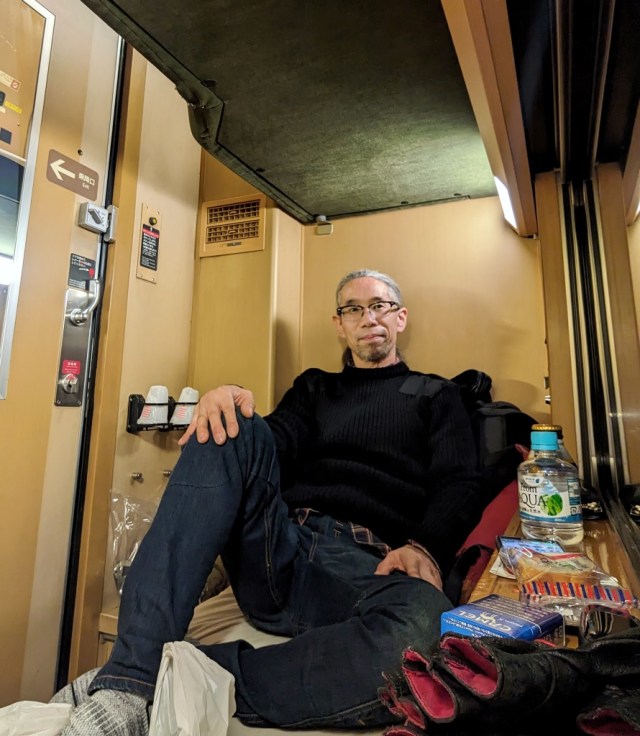
▼ The clever cupholders by the windowsill to keep your drinks from tipping over are a nice touch.
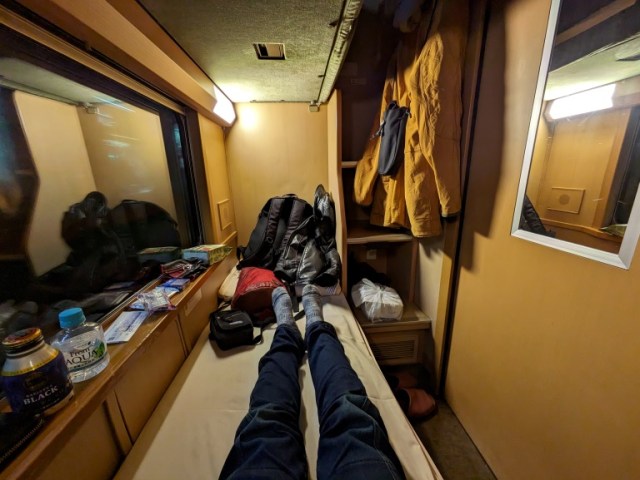
The breakdown for the ticket price is a little complicated. There’s the standard fare from Tokyo to Matsue that Japan Railway charges regardless of which train you’re taking between those two points, an additional limited express train fee, and one more surcharge for the private room. Since you can’t really opt out of any of those charges with the Sunrise Izumo, you can basically just consider the ticket price as their total, which, for a single traveler, would be 25,110 yen (US$175), which isn’t a bad price considering you’re essentially getting transportation and a night of lodging out of the deal.
However, Mr. Sato’s ticket was a little more expensive, since his room had two beds…
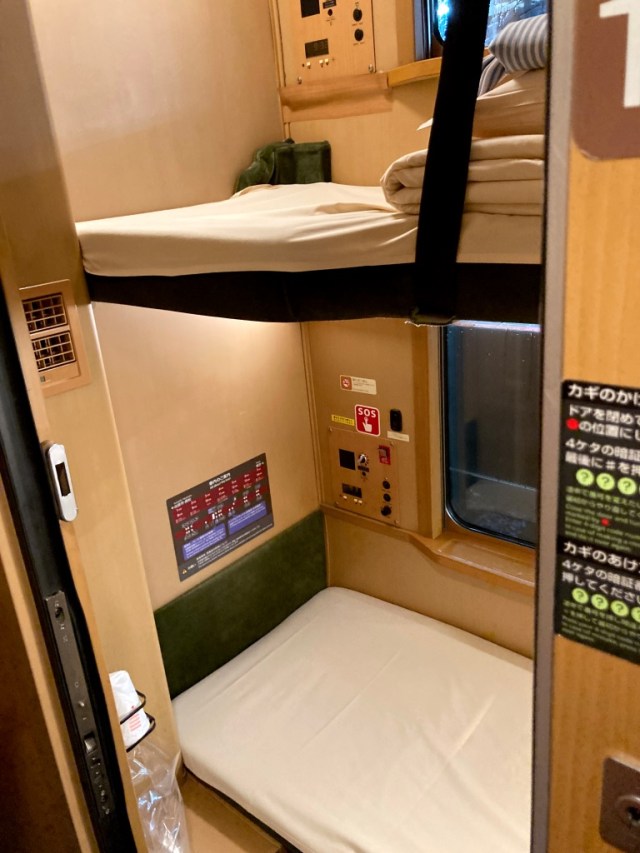
…because he wasn’t traveling alone. Accompanying him on this overnight ride to Shimane was none other than his wife, Mrs. Sato.
▼ Rest assured that Mrs. Sato really did have an emoji-caliber smile at her excitement at getting the top bunk.
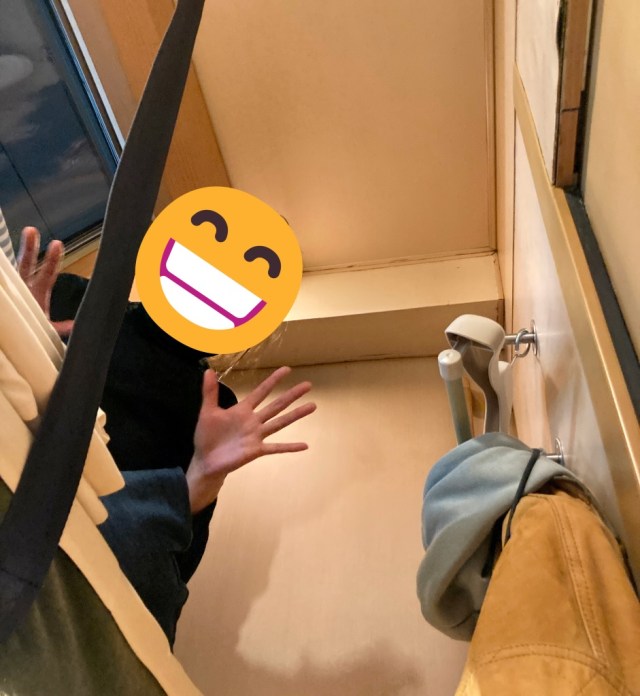
The total price for both of them to make the trip came to 46,120 yen, again, not bad since they didn’t have to pay for a hotel for the night.
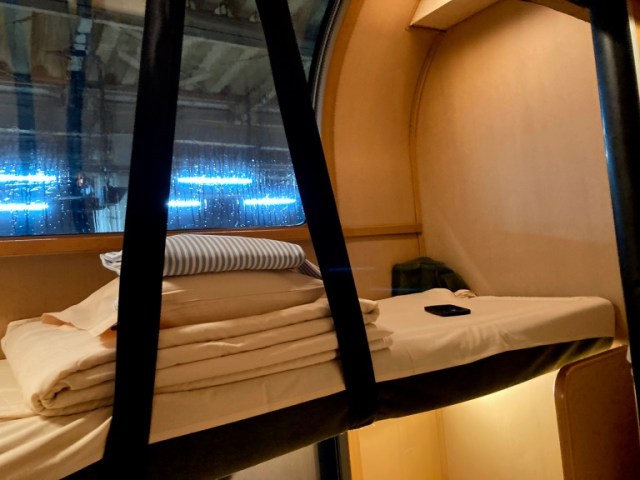
Before we get underway, we should talk a little more about the route of Sunrise Izumo, which is actually two trains in one, Sunrise Izumo and Sunrise Seto, with the train splitting in half part-way along the route.
After leaving Tokyo, major stops include Yokohama, Odawara, Atami, Fuji, Shizuoka, Hamamatsu, Nagoya, Gifu, Osaka, Sannomiya (Kobe), Himeji and Okayama. After Okayama Station, Cars 1 through 7 head north on the Sunrise Izumo route, with stops at Kurashiki and Matsue, among others, before their final stop at Izumoshi Station in Izumo, Shimane Prefecture. Meanwhile, after Okayama Cars 8 through 14 head south to the island of Shikoku and ends up at Takamtasu in Kagawa Prefecture on the “Sunrise Seto” route.
▼ This is why the train’s destination is labeled as both Izumoshi and Takamatsu.
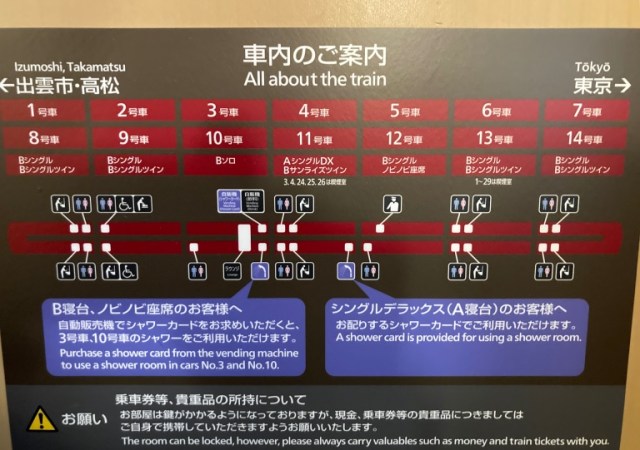
And yes, the trains run overnight in the reverse, towards-Tokyo direction too, leaving Izumoshi at 6:55 p.m. and Takamatsu at 9:26 p.m., arriving in Tokyo at 7:08 a.m.
Getting back to the amenities, inside Mr. Sato’s room was an alarm clock and controls for the lights and heater. There’s also a radio knob for NHK-FM broadcasts, but service has been discontinued, so you’ll need to supply your own tunes. There are also showers onboard the train, located in Cars 3 and 10, which can be used after purchasing a 330-yen shower card from the nearby vending machine.
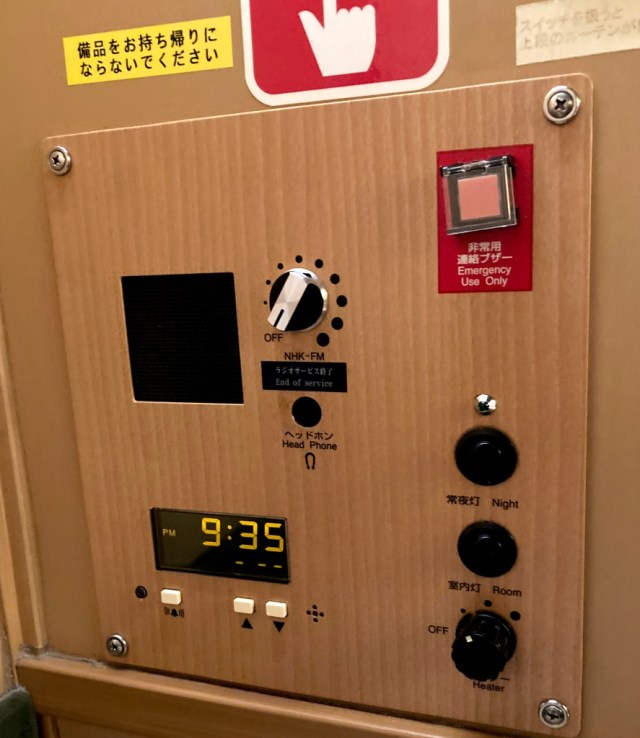
And with all that, it’s now time to get underway!
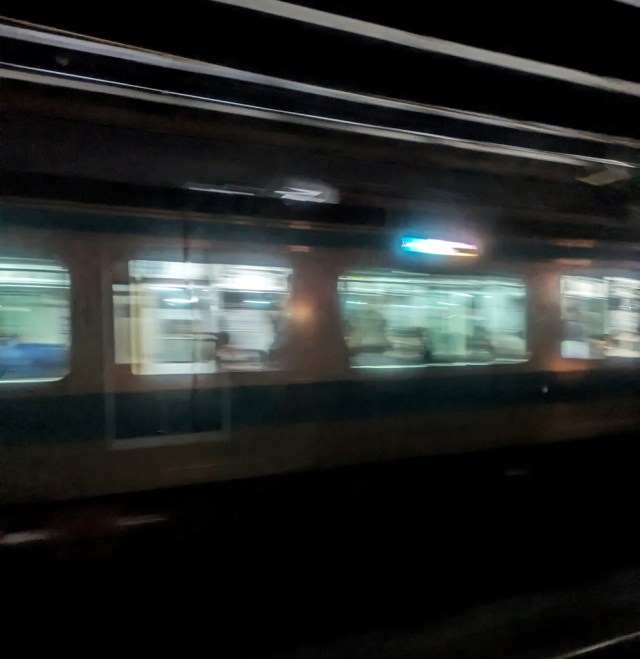
Pulling out of Tokyo Station was a slightly surreal experience. Looking out the window at the other trains, Mr. Sato could see they were full of downtown Tokyo office workers on their way home, but Mr. Sato’s journey was just getting started.
While there’s no dining car on the Sunrise Izumo, leaving out of Tokyo Station gives you access to just about the biggest selection of bento boxed meals available anywhere in Japan, so Mr. Sato had made sure to grab one at one of the many in-station shops before boarding.
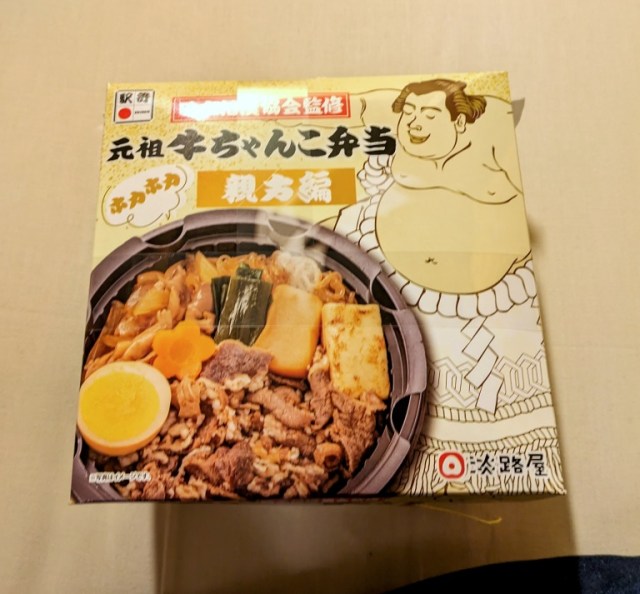
He’d picked a beef chanko bento, inspired by the flavors of chanko nabe hotpot, the traditional meal of in-training sumo wrestlers. If room-temperature hotpot sounds like an unappealing linguistic contradiction to you, fear not: this is one of Japan’s amazing special bento boxes that includes a heater that activates when you pull its string to warm up your food with no need for a microwave.
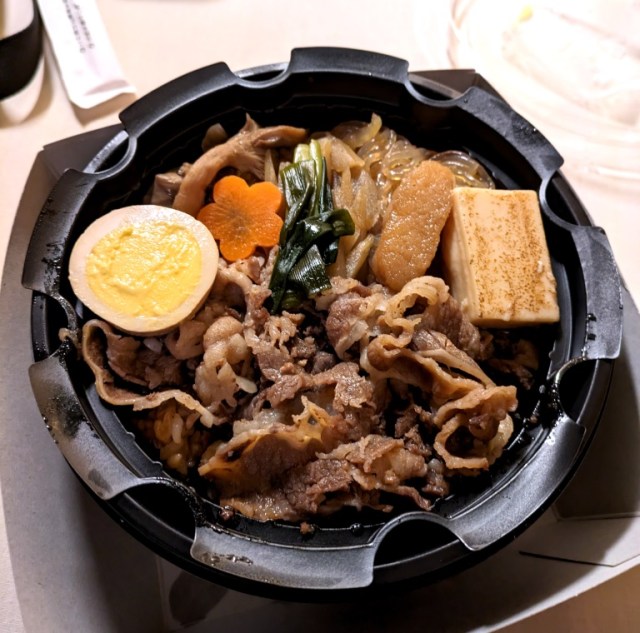
It would have been a tasty meal under any circumstances, but tucked into his own private room while riding the rails, it felt especially delicious.

About two hours after leaving Tokyo Station, they’d reached Atami, at the eastern end of Shizuoka Prefecture. Rain had started to fall, with waterdrops streaking the windows and the clouds overhead obscuring what was supposed to be that night’s full moon.
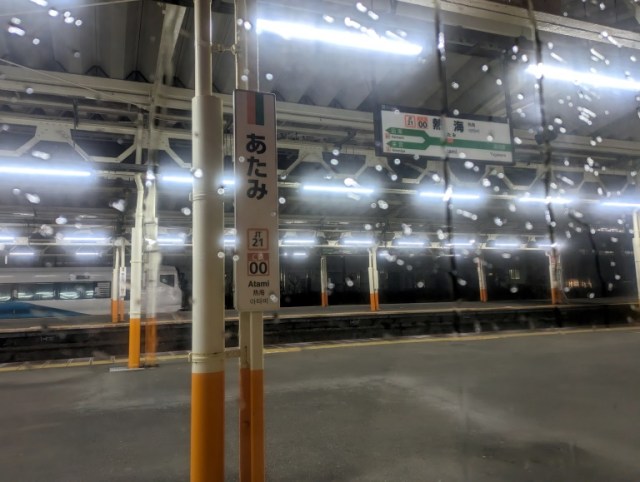
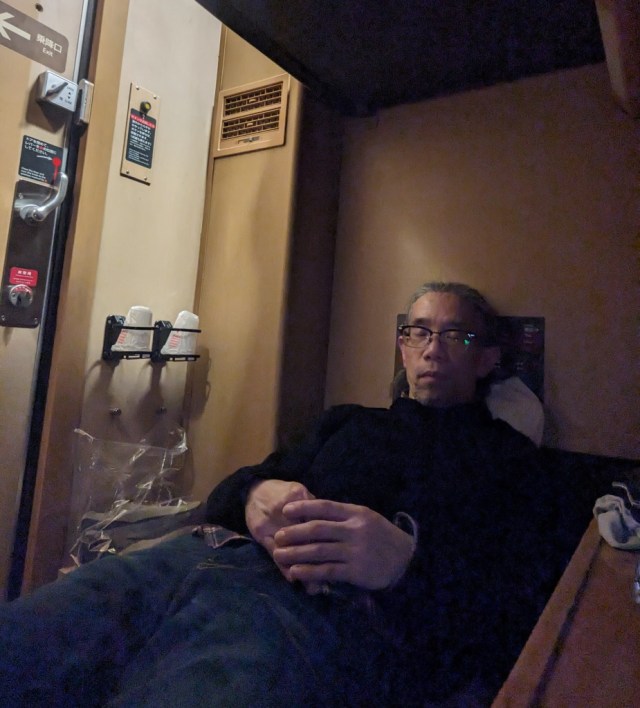
Warm and dry inside his room, though, Mr. Sato was perfectly comfortable, with the rhythmic clack of the tracks acting like a soothing white noise, combining with the rocking of the train to lull him into sleepiness as he sat up, enough so that he decided it was time to lie down completely and catch some Zs.
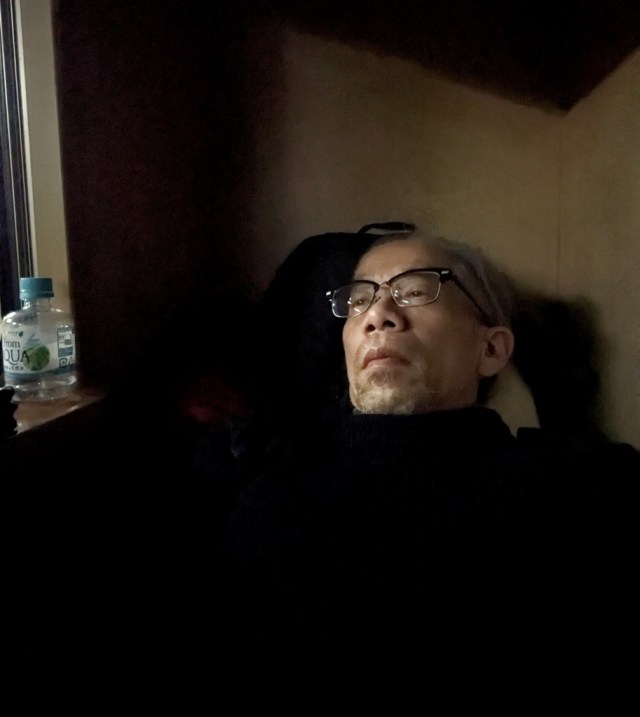
He briefly woke up somewhere around Kyoto. Peeking out the curtain, he could see that the train had passed out of the rainy weather, and he got to appreciate a little moonlight before closing the drape again and going back to sleep.
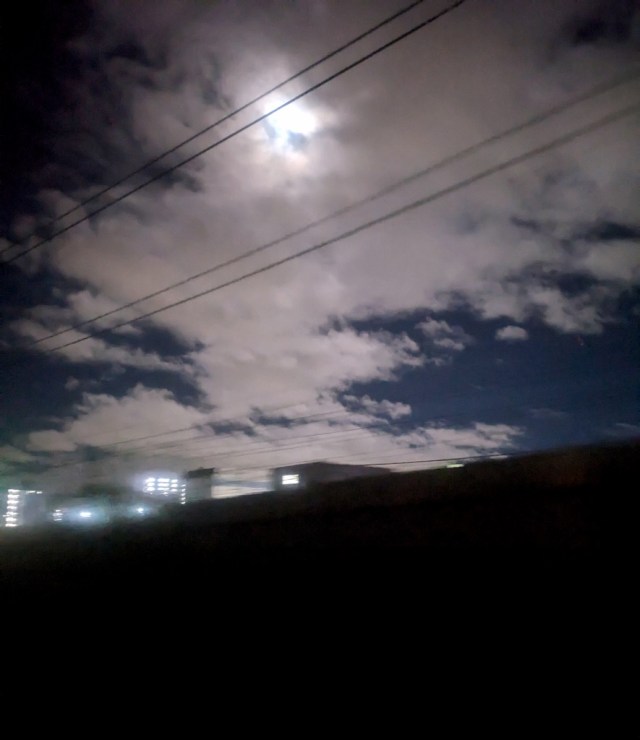
At around 5:30, the Sunrise Izumo pulls into Sannomiya Station in Kobe. By this time, regular trains have started running and people with early morning shifts are on their way to work, so the station was livelier than the others Mr. Sato had passed through in the middle of the night.
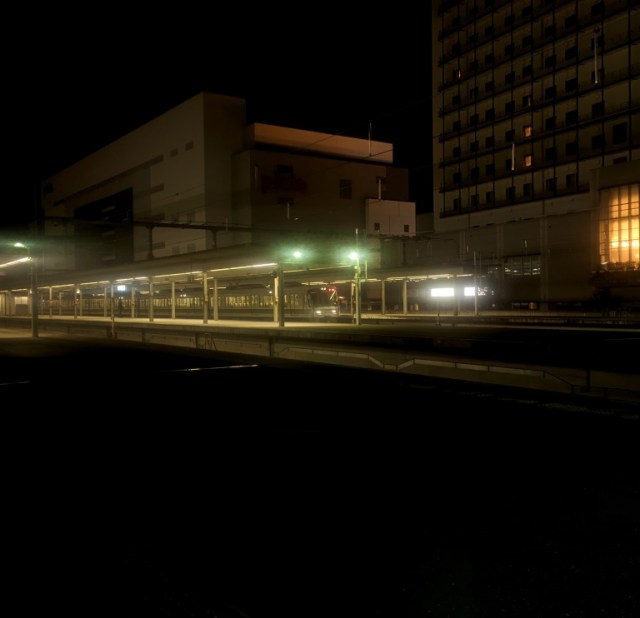
A little before 6:30, with the morning sun starting to come up, they reached Okayama. Like we mentioned above, this is where the train splits into two, so there’s a short stop while the JR workers carry out the procedure and new staff comes onboard. If you’re a rail fan, you can actually get off the train while this is going on and watch the work from the platform, though Mr. Sato decided to stay in bed.
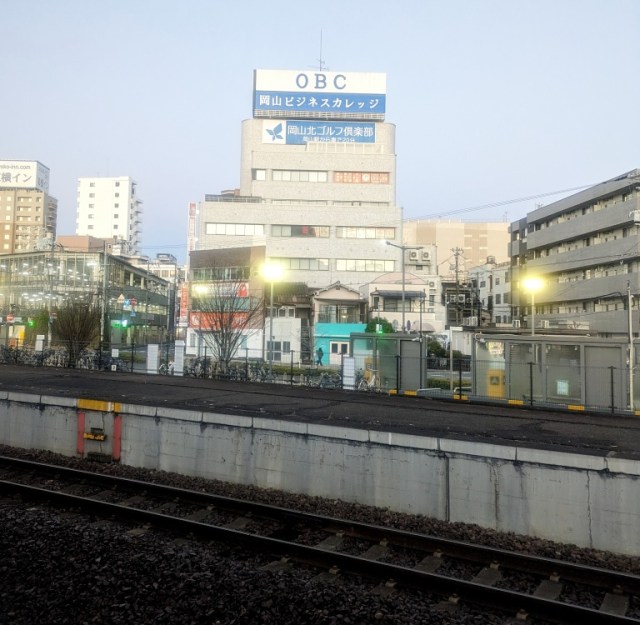
After the train split, the Sunrise Izumo heads up the Hakubi Line, moving from the south side of Japan’s main island of Honshu to its north. In between the terrain gets more mountainous, the towns smaller, and the scenery more rural, with the shorter skylines giving Mr. Sato a nicely framed view of the morning sun. The nature of our work at SoraNews24 turns most of our staff into night owls, so it’s rare for us to see the sunrise without the foggy-headedness of having been up all night, but this was a beautiful, nicely rested exception for Mr. Sato.
▼ Sunrise on the Sunrise Izumo
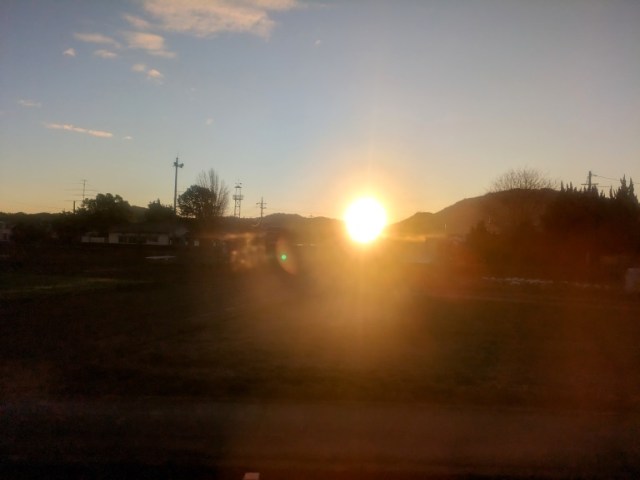
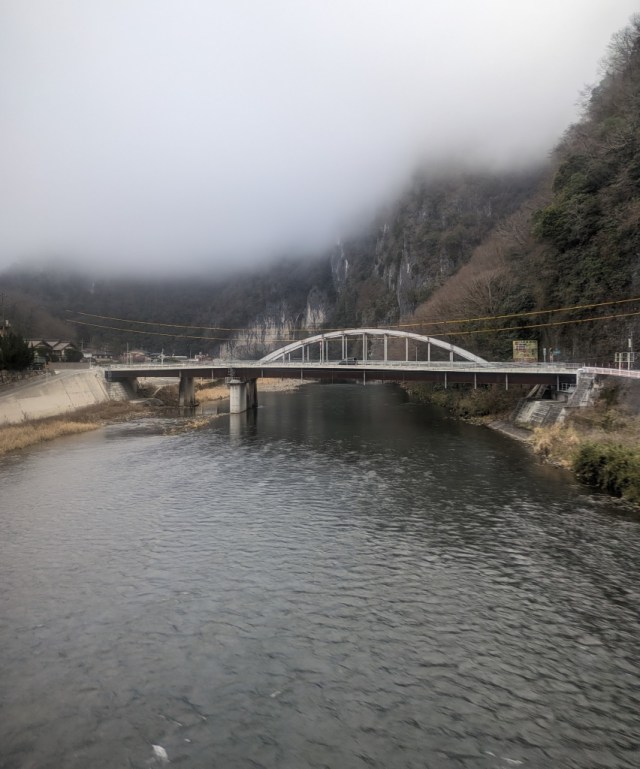
Climbing into the mountains feels a bit like going back in time. Especially when the mists start creeping into the valleys, it’s easy to picture Japan’s ancient myths and folklore being born as people of eras past wondered about what sorts of things might be hiding just out of sight.
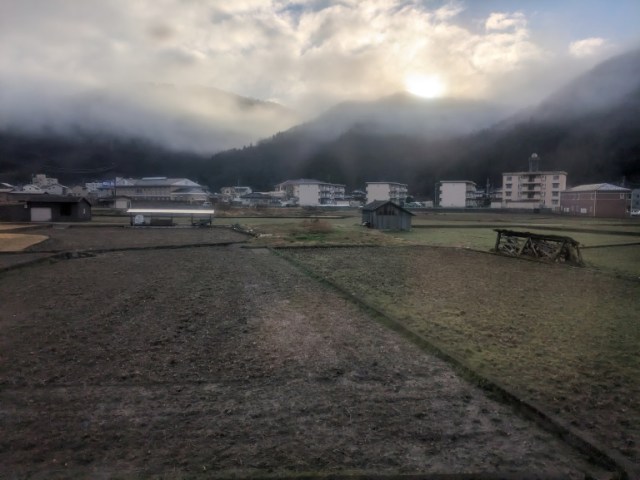
▼ To Mr. Sato’s still slightly sleepy eyes, this line of clouds looked like a dragon flying over the town.
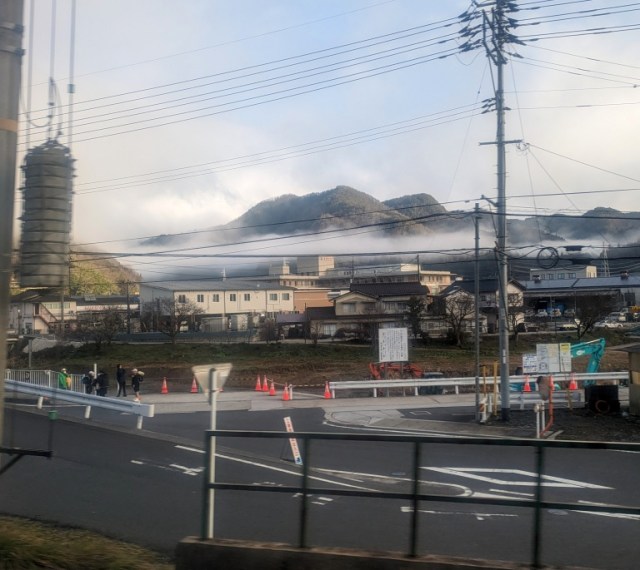
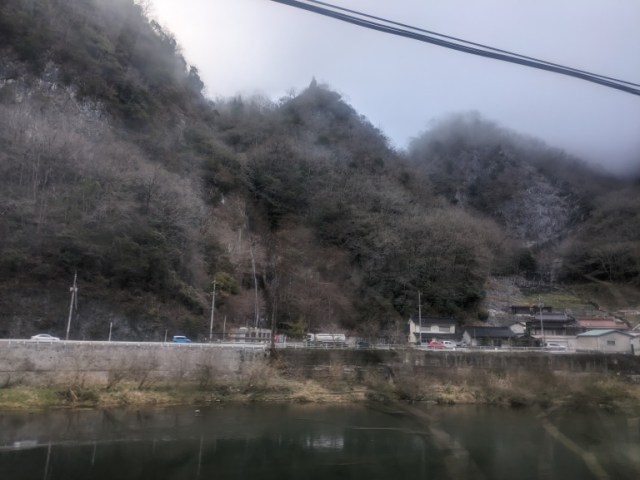
This part of the route also had Mr. Sato thinking about more recent history. For example, before he made the move to Tokyo, Mr. Sato was a part-time construction worker whose projects included helping with track maintenance around Neu Station in Tottori Prefecture, Shimane’s neighbor to the east.
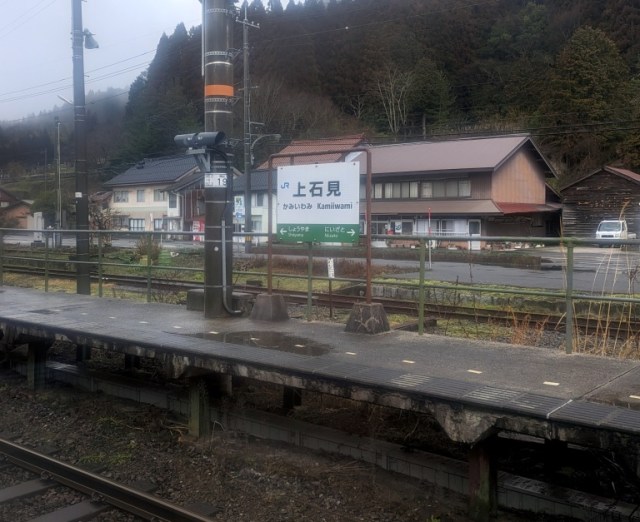
Once the Sunrise Izumo crossed over the border into Shimane, it passed by Auto Parlor Yasugi, which now houses a drone repair shop but which used to have a video game arcade that Mr. Sato frequented in his junior high days.
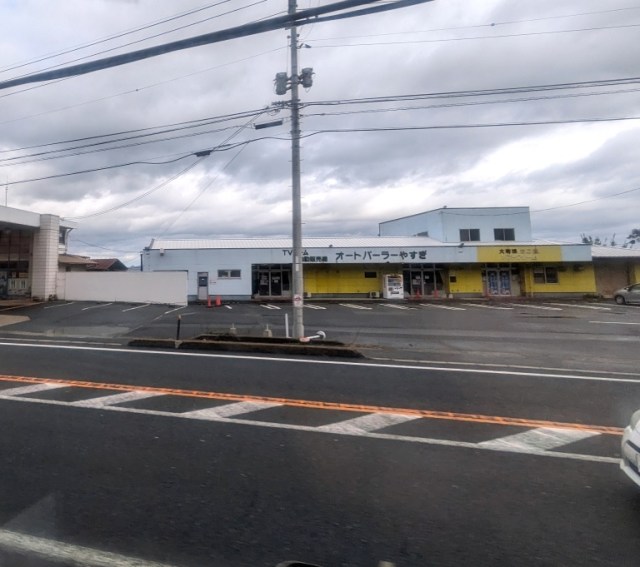
But things started to get really nostalgic once Mr. Sato caught sight of Nakaumi. Though its name translates to “inner sea,” Nakaumi is actually Japan’s fifth-largest lake, whose eastern half Matsue is wrapped around.
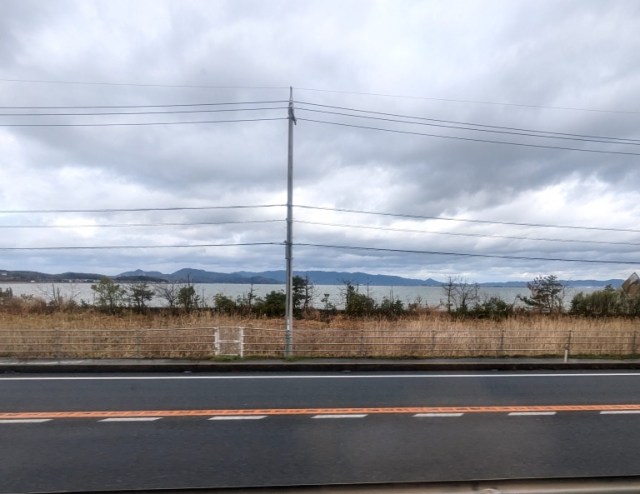
And Mr. Sato really knew he was back in his hometown when he passed by this apartment complex.
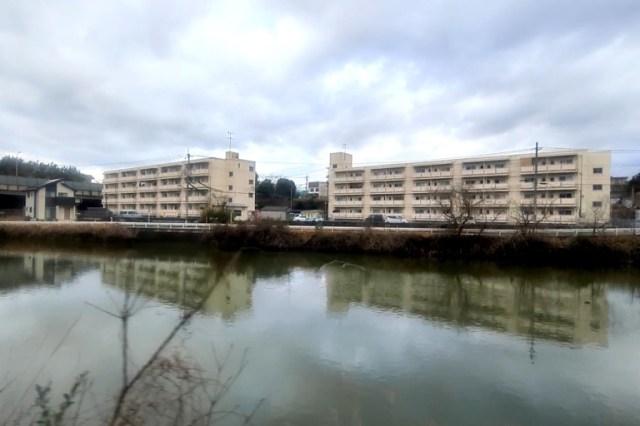
Long ago, Mr. Sato’s dad was a traveling craftsman, and when a job took him to Shimane, he met a local girl. The two of them got married, and after she gave birth to twin boys (Mr. Sato and his twin brother) they moved into an apartment in this complex, where they lived for the next 17 years, until the boys graduated from high school.
Mr. Sato spent his early childhood days fishing for crawdads in this river, and adventuring out into the hills to explore and build secret forts, coming home covered in mud. Many years have passed since then; his parents now live in a different part of town, and Mr. Sato has gotten a lot better at keeping his clothes clean. All the same, he was still coming home, and couldn’t help feeling a little bit like a kid again.
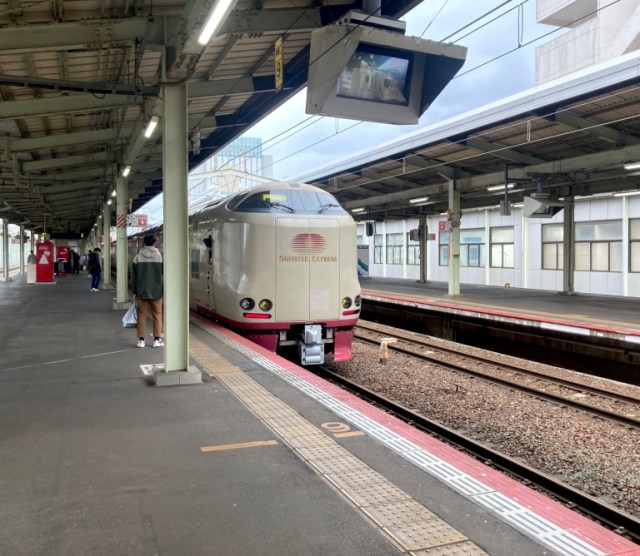
The Sunrise Izumo arrived at Matsue at 9:29 in the morning, almost 12 hours after leaving Tokyo and reminding Mr. Sato that he lives pretty far away from his hometown. But maybe a long trip back isn’t such a bad thing if it gives you time to think about how far you’ve come and the path you took to where you are now, plus gives you a chance to see some of the milestones you passed by on the way one more time.
Related: Sunrise Izumo official website (JR Odekake.net)
Photos ©SoraNews24
● Want to hear about SoraNews24’s latest articles as soon as they’re published? Follow us on Facebook and Twitter!
Credit:

0 comments:
Post a Comment